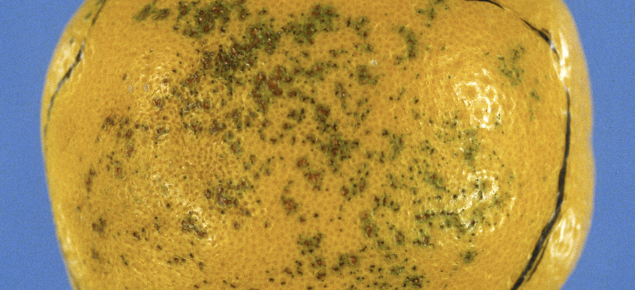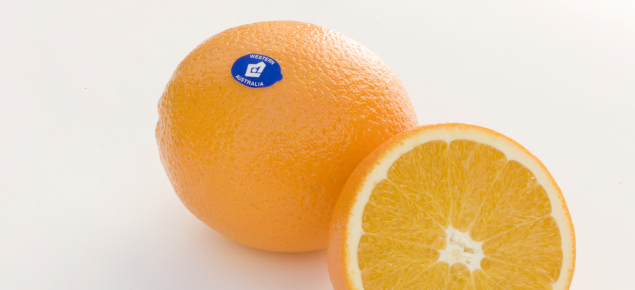What plants are affected?
Septoria citri or septoria spot affects many citrus crop species worldwide, but is most devastating on lemon (Citrus limon) and grapefruit (C. paradisi).
In eastern Australia this disease is prevalent on navel orange (C. sinensis 'Washington') and juicing orange (C. sinensis 'Valencia').
What do I look for?
Fruit symptoms often present as small, round, light tan-coloured lesions (pits) on the outer rind. They are 1-2mm in diameter with a narrow green margin. As the fruit matures they become reddish to pale brown and contain small black spots. These black spots are barely visible to the naked eye.
In some circumstances fruit lesions may enlarge and merge to form brown-black sunken blotches, while in other cases fruit lesions may not appear until fruits are in storage.
Leaf spots occur on the lower surface of leaves. They appear as small, blister-like brown-to-black spots, 1-4mm in diameter, surrounded with a yellow halo. They eventually become pale brown. Leaf symptoms may be more prevalent in the lower canopy where ground irrigation sprinklers are used, often resulting in leaf drop in the lower parts of the tree.
What damage can this pest cause?
Fruit lesions are mainly of aesthetic concern, and reduce produce quality, grade and marketability. This is a concern for growers aiming for high value fresh markets.
What do I do if I find it?
Septoria citri Pass. 1877 is a prohibited organism for Western Australia. It is important that suspect disease occurrence is reported. Its early detection and eradication will help protect Western Australian citrus growers. Please contact the Pest and Disease Information Service (PaDIS) to report this pest.



